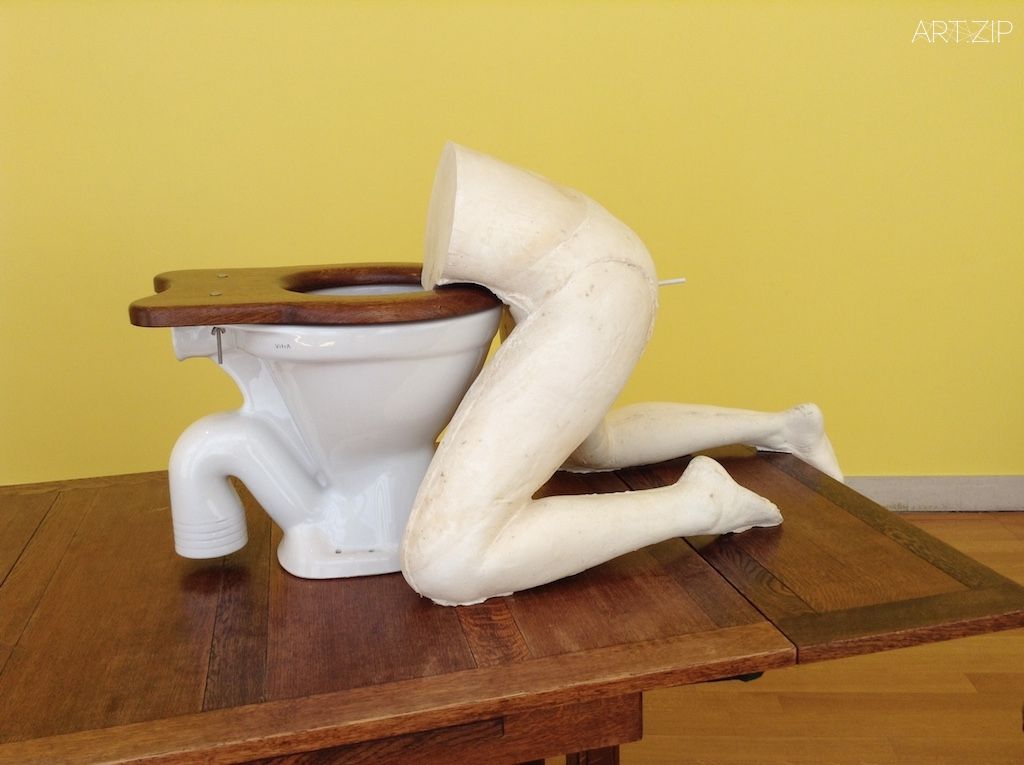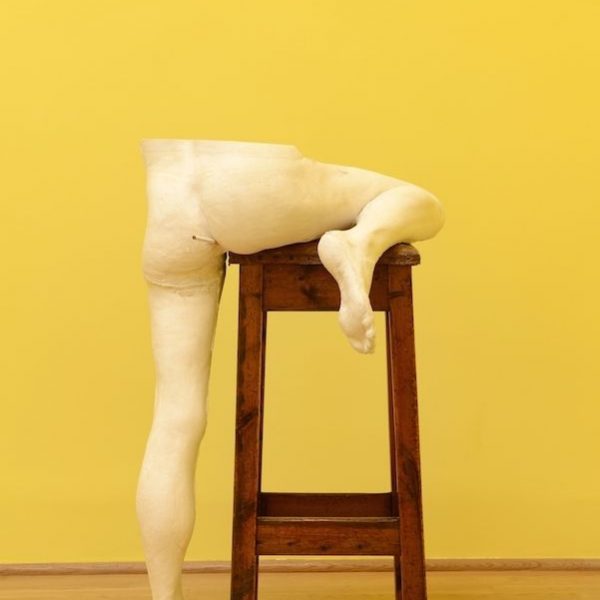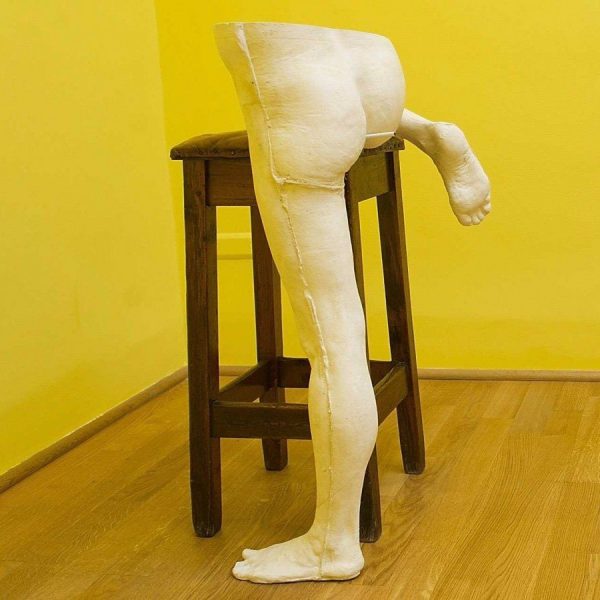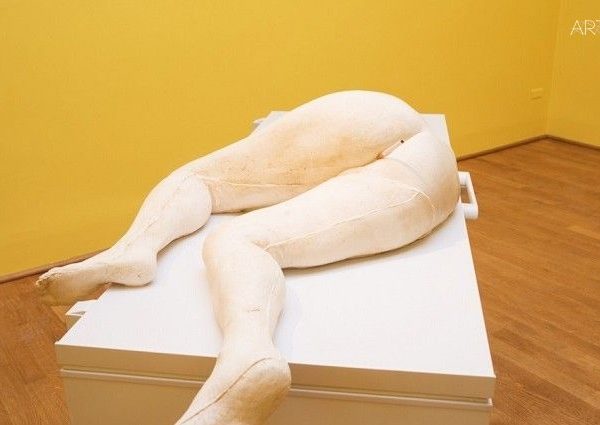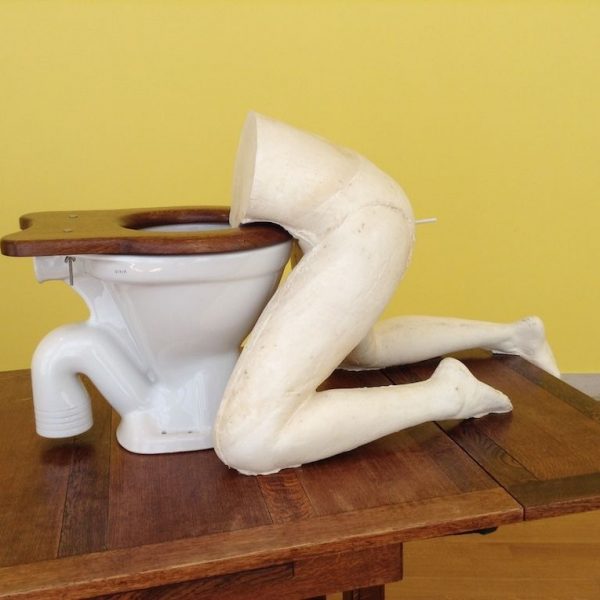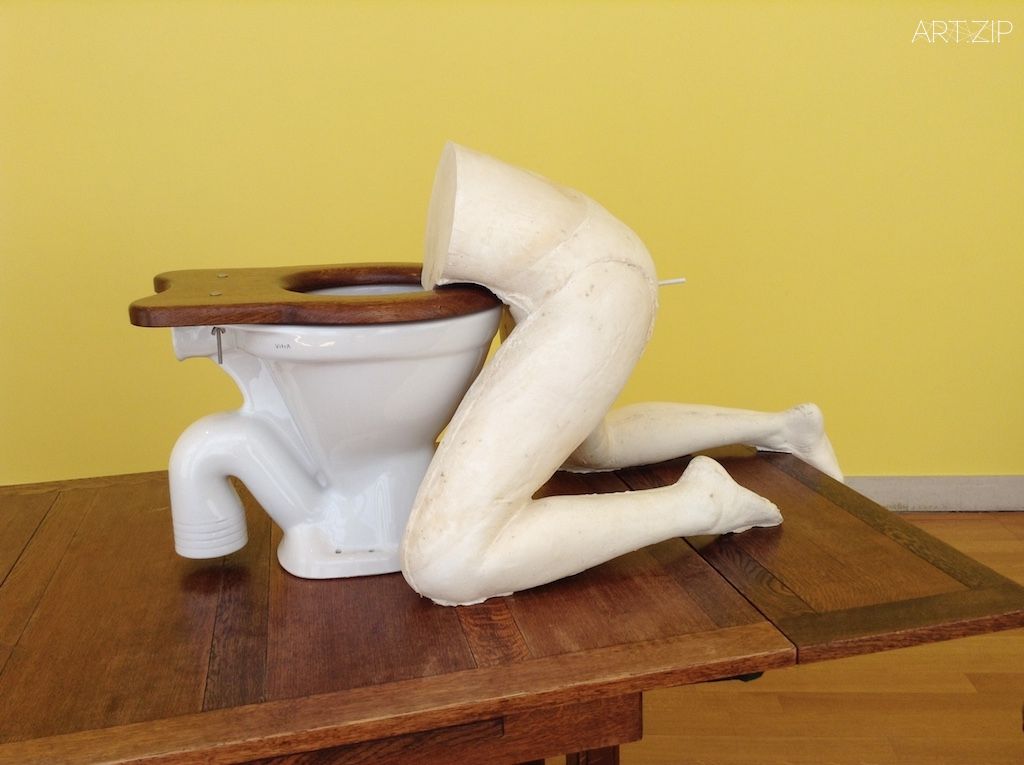
TEXT BY 撰文 x JESC BUNYARD
TRANSLATE BY 翻譯 x CAI SUDONG 蔡蘇東
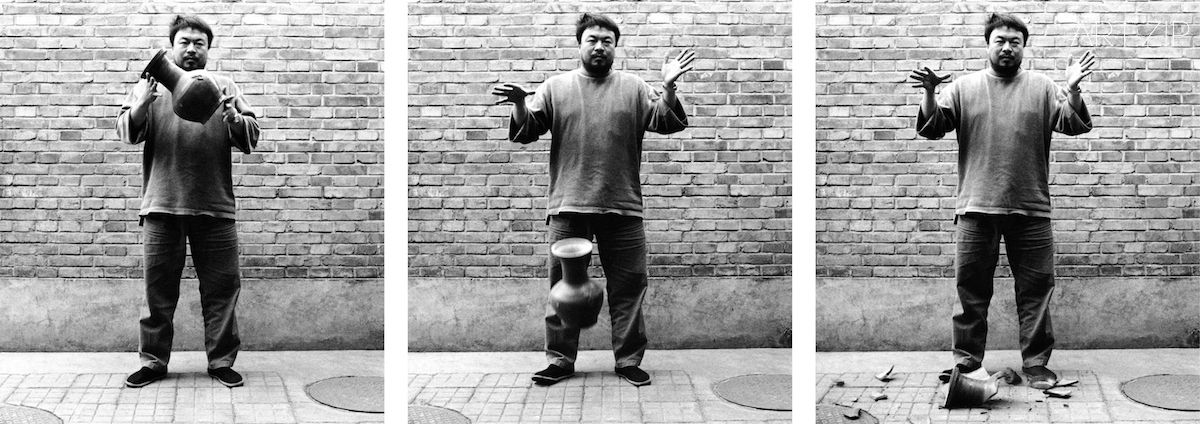
Ai Weiwei, Dropping a Han Dynasty Urn, 1995 3 black and white prints, each 148 x 121 cm Courtesy of Ai Weiwei Studio Image courtesy Ai Weiwei (c) Ai Weiwei
In 2008 Beijing hosted the Olympics and Paralympics, four years later it was London’s turn. To celebrate each country hosted two festivals. In 2008 the UK played host to China Now, which showcased cultural and sporting events from the country. The events included China Design Now, an exhibition that took place at the V&A. The show explored new design in China, focusing on the effect that rapid economic development had on architecture and design in three major Chinese cities: Beijing, Shanghai and Shenzhen. The exhibition focused on a wide range of design from architecture, including the ‘Bird’s Nest’ stadium, to fashion. In 2012 the festival UK Now took place in China and included exhibitions of work by Tony Cragg and Rankin as well as tours from the English National Ballet. The two festivals enabled creative discussions across the two countries and different institutions as well as displaying the quality of each country’s contemporary art scene.
In 2011, according to an article written by the China’s vice minister of culture Ding Wei, the idea of cultural exchange between China and the EU was reiterated at the China-EU summit. In the article published online in The Parliament Magazine, Ding Wei stated the importance placed on cultural exchanges between countries: “Cultural exchange and cooperation is an important part of the China-EU comprehensive strategic partnership. It plays an irreplaceable role in enhancing mutual understanding between people and in promoting the value of our relationship”. 1 This idea of cultural conversation has led to culture and exchange events between China and several EU member states including France and Germany. 2015 now marks the 40th anniversary of China-EU relations and to celebrate this a range of events throughout China and the European Union will take place. This will include the ‘Chinese contemporary art – European tour’ and the ‘Danish cultural season’. The series will also include the UK-China Year of Cultural Exchange’.
At the moment of writing, events showcasing areas of British culture are taking place in China, including exhibitions, performances, design, films, animation and digital art. Later on in the year, aspects of Chinese culture will be shown in Britain in a similar display.
It’s interesting to note that 2015 is also The Year of Mexico in the UK and the UK in Mexico. Which raises the question: how many of these events take place? On the GOV.uk website, the official website for all things do to with the UK Government, an article written by the British Embassy Mexico City uses language similar to other articles on the website detailing the UK-China Year of Cultural Exchange. The aim is to promote partnerships between the two countries via arts, education, business and trade.
The oddity is that these two event series are rarely mentioned in conventional media, indeed it’s difficult to find news articles on the UK-China Year of Cultural Exchange outside of the GOV.uk or British Council websites. Finding coverage on The Year of Mexico in the UK and the UK in Mexico is easier, possibly due to the fact that events involved in the year have already taken place in the UK. Whereas events taking place in Britain, which are part of the UK-China Year of Cultural Exchange are (at the time of writing) due to take part later this year.
However, this year is supposedly a showcase of British and Chinese contemporary culture; surely it ought to be shouted about? The truth is that is has, although not through channels normally trodden by those looking for cultural news. Prior to the formal announcement by Chinese Premier Li Keqiang in 2014, according to a news piece on the British Council website, David Cameron visited China in 2013 during which various agreements were renewed all designed to “demonstrate the growing strength of UK-China relations, with creativity and cultural exchange at the heart of developments.” 2
Worryingly, politics is completely interwoven within the event series. Politicians placing art at the forefront is not a bad thing, but too much politics within the arts can muddy the waters. On the GOV.uk website, there are news articles detailing the announcement of the ‘2015 UK-China Year of Cultural Exchange’. The process feels so bound up with politics that past news articles have a disclaimer detailing which government they were published under. At the head of two news articles, including one published on the day of the launch on 2nd March, written in bold is the following: “This world location news article was published under the 2010-2015 Conservative and Liberal Democrat coalition government”.2 Since the news items were written, the UK has voted in a Conservative government. It’s odd that a cultural news item would need this announcement. Perhaps this indicates that there is more here than simply cultural enjoyment, or at the very least a worrying presumption that culture can be a tool for politics. Can there be international cultural exchange that is meaningful but without politics?
There is the need for good and honorable international relations. Art can be used to strengthen the ties between nations but not seen as a tool just because a nation wants to trade with another. Culture is more than a commodity. Cultural exchanges should be used to showcase the artistic talents of each nation and develop cultural ties and collaborations between organizations. This co-operation is mentioned in the GOV.UK news article ‘2015 UK-China Year of Cultural Exchange’ published on the 9th January 2015: “Our two cultures continue to inspire innovation and creativity, and audiences in both countries will enjoy many opportunities to explore what this creative partnership means in the 21st Century.” 3These exchanges are taking place but there was a certain amount of wading through sycophantic Politician language before finding out what the cultural goals of the exchange are. The Royal Shakespeare Company Translation Project is one example of a meaningful collaboration in which the RSC and Chinese partners bring new translations of Shakespeare’s plays to a Chinese audience and introduce UK audiences to Chinese drama.
There are great exchanges taking place, including the exhibition ‘Chinese Photobook’, which has been exhibited in London and Beijing. The show explored China’s history through the photobook through a curatorial collaboration between Martin Parr and photographer team WassinkLundgren. The exhibition and the translation project demonstrate what is possible when there are meaningful collaborations. The work becomes more than a showcase of a nation’s cultural muscles: there is a lasting impact.
This cross-organizational approach is one that should be pursued and celebrated. The V&A is an example of an institution that is forming cultural ties with China. As well as taking part in the China Now festival, the museum has curated a number of contemporary and antiquarian exhibitions. This includes two shows which coincided in 2013: ‘Masterpieces of Chinese Painting: 700 – 1900’, which presented the first overview of the tradition of Chinese painting in the UK since 1935, and ‘Travelling to the Wonderland’, in which the artist Xu Bing transformed the garden at the V&A inspired by a Chinese fable Tao Hua Yuan (Peach Blossom Spring). The museum also regularly works on a number of exhibitions in China. The V&A will also be helping the development of a new design museum in Shenzhen. Opening in 2016, the building is billed as the first major design museum in China. The museum will be part of the Shenzhen Sea World Cultural Arts Center and aims to present the best of Chinese and international design.
The V&A’s programme demonstrates a goal to be working with China long term; the V&A website gives details of exhibitions going back to 2005, in addition to their important Chinese collection, which holds approximately 18,000 objects. However the V&A’s work is not discussed within the GOV.uk news releases mentioning the year of cultural exchange. Neither do they mention the previous cultural festivals China Now and UK Now. This gives the impression that each event is separate to the other and just spring up from nowhere. This is a worrying indication that these events do occur without referencing the other, meaning that the effect of cross-cultural exchange is only temporary as it is overtaken by the next event. What cultural conversations are put into motion within this festival, the translation project for example, need to be carried over and reinforced into the next few years and future festivals. The collaborations need to exist long after the festival, like the V&A, but they also need to be publicized and written about. These writings need to be more than just official governmental releases. I wish to see essays from curators, artists, museum directors and more. This way the cultural dialogues will exist after the governmental ones and will continue election after election. They should be supported by politics but separate from it.
There is a danger that the art will get lost within politics. Visitors to the events taking place as part of the UK-China Year of Cultural Exchange should be aware that, ultimately, the politicians have curated what’s on show. Examples of this can be found in both the Chinese and the British programmes. ‘Now – Michael Craig-Martin’ is one such example. The touring exhibition has been to Shanghai and Wuhan earlier this year, and featured fifty new paintings examined daily life through objects. Craig-Martin is regarded as the godfather of British conceptual art, but he was also an influential figure to many of the YBA’s (Young British Artists) like Damien Hirst, Tracey Emin and Sarah Lucas. This year, at the Venice Biennale, Lucas represented Britain with her exhibition ‘I SCREAM DADDIO’ at the British Pavilion. The exhibition is written about on the UK Now website, but is not included in the Cultural Exchange programme list. Surely a form of Lucas’ work linked to ‘I SCREAM DADDIO’ would have been relevant to be included in the events list. Lucas’ omission is perhaps due to the fact that her glorious phallic structures are considered too controversial to send. This begs the question: who decides the schedule? Did someone decide to send a less risky form of art? They sent the less provocative teacher instead of the student. This doesn’t make Craig-Martin’s work any less enjoyable and worthwhile to include in the programme, but it is interesting to note that none of the YBA’s work, often considered some of the best examples of British contemporary art, are incorporated within the exchange.
Another, and perhaps the most obvious, omission is Ai Weiwei. The Chinese artist’s ongoing intellectual and political battle with his government is often documented. It’s no surprise then, that currently Ai Weiwei is not included in the Chinese section of the exchange programme. Although his work was included in China Now, as he was one of the architects involved in the design of the ‘Bird’s Nest Stadium’ featured in the V&A’s China Design Now. Coincidently the Royal Academy of Arts will be hosting a major exhibition by Ai Weiwei in the autumn of 2015. In 2011 Ai was detained by the Chinese authorities for 81 days and has not been able to leave China since, as his passport was confiscated. In solidarity the RA made him an Honorary Royal Academician in May 2011. The exhibition, taking place from 19th September till 13th December 2015, will be a major display of the artist’s work. The RA will present a selection of Ai’s work from 1993 onwards, which marks his return to China from New York.
This coincidence draws attention on the omission of Ai Weiwei’s work from the schedule, similarly with Sarah Lucas. The timing of Ai’s RA show and Lucas’ exhibition at the Venice Biennale means it would have made perfect sense to include both of them in the Cultural Exchange programme. The UK-China Year of Cultural Exchange was initiated by politics. Does that mean that politics decided what art should be sent to both countries to improve relations?
Politics is tangled within the Year of Cultural Exchange. Each government should support and enable the arts, recognizing its value to each nation. The nation, however, should not see culture as a means to trade business with another nation. International cultural conversations, particularly those that take place between different institutions and organizations, should be supported because of its merit alone. There is nothing wrong with the arts events taking place within the UK-China Year of Cultural Exchange. Many of them, as discussed, have the potential for longevity and future partnerships. As long as any viewer, in whichever nation, goes in with the awareness that these art events are government sanctioned and, therefore should only be taken as an example of the art each nation has. There is a need for more and stronger cultural exchanges to happen.
2008年北京舉辦了奧運會和殘奧會,四年後,倫敦成為東道主。中英雙方為了慶祝對方舉辦的兩屆盛會各自主辦了一系列活動。2008年,英國舉辦了展示中國文化及體育盛況的《當下中國(China Now)》展,其中舉辦於維多利亞與阿爾伯特博物館(Victoria & Albert Museum,以下統稱為V&A博物館)的《當下中國設計(China Design Now)》展也是活動之一,展覽探索了中國的新設計,聚焦中國的北京、上海和深圳三座大城市中經濟的高速發展對建築和設計的影響。展覽關注了與設計相關的廣闊天地,從諸如鳥巢體育館的建築設計到服裝時尚。2012年,中國舉辦了《當下英國(UK Now)》,活動包括藝術家托尼·克拉格(Tony Cragg)和時尚攝影師蘭金(Rankin)的作品展覽,以及英國國家芭蕾舞團(English National Ballet)的巡回演出。兩次活動促進了國與國、制度與制度間的創意討論,展示了兩國當代藝術的風貌和素質。
2011年,根據中國文化部副部長丁偉所著文章的精神,中歐峰會上重申了中歐文化交流的觀點。丁偉在網絡版《議會雜誌(The Parliament Magazine)》上發表文章,指出國家間文化交流的重要性──“文化交流與合作是中歐全面合作夥伴關係的重要組成部分。其在加深兩地人民的相互了解和提升我們的關係價值方面扮演著不可替代的角色”1。這種文化對話的理念促成中國和法國、德國等歐盟成員國共同舉辦了一系列文化交流活動。如今,2015年恰逢中國歐盟建交40周年,為了慶祝這一歷史時刻,遍布中國和歐盟的一系列活動將展開,包括“中國當代藝術——歐洲巡回(Chinese contemporary art – European tour)”和“丹麥文化季(Danish cultural season)”,以及“中英文化交流年(UK-China Year of Cultural Exchange)”。
就在筆者寫作該文的當下,展現英國文化各領域的活動正在中國如火如荼地開展著,這些領域包括展覽、表演、設計、電影、動畫和數字藝術。今年晚些時候,英國也將舉辦展示中國文化方方面面的類似活動。
有意思的是,2015年也是英國的“墨西哥年”、墨西哥的“英國年”。這不僅讓人想起一個問題:這樣類似的活動有多少?在英國政府事務的官方網站上(GOV.uk),我們可以找到英國駐墨西哥城使館的文章,其所用的語言與該網站上詳細描述“中英文化交流年”的非常相似,活動目的是通過藝術、教育、商業和貿易增強兩國的合作夥伴關係。
但奇怪的是,傳統媒體都甚少提及這兩個系列的活動。實際上,除了GOV.uk和英國文化協會(British Council)的網站上,我們很難再找到關於“中英文化交流年”的文章。而找到英國的“墨西哥年”和墨西哥的“英國年”的報導顯得較為容易,這或許是因為“墨西哥年”的活動已經在英國舉辦,而“中英文化交流年”中英國部分的活動則要等到今年晚些時候才舉行(相比於當前寫作時間)。
一般認為,今年的活動展示的是中英兩國的當代文化,所以不大肆宣揚怎說得過去?實際情況確是這樣,只不過不是通過人們常規獲取文化新聞的途徑。根據英國文化協會網站上的一則新聞,早在2014年中國總理李克強發表關於“中英文化交流年”正式聲明之前的2013年,大衛·卡梅隆(David Cameron)在到訪中國時便更新了許多協議,以“展示不斷壯大的中英關係,並將創新和文化交流置於中英關係發展的中心”。2
但讓人擔憂的是,政治因素總是交織在活動系列中。政治家將藝術擺在前沿不是一件壞事,但太多的政治因素進入藝術領域卻把水攪渾了。在GOV.uk網站上,有不少新聞文章詳述“2015中英文化交流年”的聲明。這個流程讓人覺得此事和政治的聯繫是如此緊密,因為許多報導都提到文章是在哪個政府時期發布的,似乎是作為一種免責聲明。在兩篇新聞文章的標題下,包括一篇在3月2日活動開始日的報導,有這樣一行黑體字“該國際新聞文章發表於2010-2015保守黨和自由民主黨聯合政府時期”。2該新聞成稿後,英國選出保守黨政府。但一則文化新聞居然需要這樣的聲明,實在是很令人詫異。也許這暗示出,此事絕非文化能帶給人們享受那麽簡單,或至少讓人們得出一個擔憂的推測——文化不過是政治的工具。到底國際文化交流能否既有意義,又不受政治影響呢?
我們需要有益體面的國際關係。藝術可以用來增進國家間的關係,但不應該單單因為某國為謀與別國貿易而被視為工具。文化不僅僅是一種商品。文化交往應該展示各國的藝術天才,增強組織間的文化聯繫和合作。這種合作關係在GOV.uk 2015年1月9日刊登的文章《2015中英文化交流年》也有所體現:“我們這兩種文化繼續激發革新與創意,來自兩國的觀眾都能獲得充裕的機會探索這種創新的夥伴關係在21世紀的深厚意義。”3這樣的文化交流正在發生,但是在找到交流真正的文化目標之前,確實還有一些諂媚奉承的政治話語需要去應付。皇家莎士比亞劇團翻譯項目(Royal Shakespeare Company Translation Project)便是一個有意義的合作項目,皇家莎士比亞劇團及其中國合夥人把莎士比亞戲劇的全新譯本帶給了中國觀眾,同時也把中國戲劇介紹給英國的觀眾。
許多重大的文化交流也在發生,包括《中國攝影書(Chinese Photobook)》展,已經在倫敦和北京展出。展覽結合了英國攝影師馬丁·帕爾(Martin Parr)和攝影團體魯小本&泰斯(WassinkLundgren)的策展合作,通過“攝影書”的方式探索了中國歷史。這種展覽和前述的翻譯項目展現了當有意義的合作存在時,可能帶來多麽好的成果。這樣的作品已經超越了展示國家文化“肌肉”的意圖:它的影響是更深遠的。
這種跨組織的辦法是值得效法和贊揚的。V&A博物館就是和中國締結文化聯繫的機構之範例。除了參與了《當下中國》,V&A博物館還策劃了一些當代和古文物展覽,包括:《中國畫大師精品展700﹣1900》,這是自1935年以來在英國的土地上首次對中國繪畫傳統綜覽式的展覽;以及《桃花源的理想一定要實現(Travelling to the Wonderland)》——藝術家徐冰汲取中國傳說“桃花源”靈感,把V&A博物館的花園改造得耳目一新。以上兩場展覽恰巧都在2013年舉辦。V&A博物館經常在中國舉辦各種展覽,同時也協助推動著深圳一座新設計博物館的進程。這座博物館將於2016年竣工,宣傳稱其為中國首座大型設計博物館,將成為深圳海上世界文化藝術中心的一部分,目標是呈現中國以及世界上的最佳設計。
V&A博物館的此類項目表明了和中國長期合作的目標,V&A博物館網站給出了自2005年以來所有展覽的詳細信息,以及博物館多達約18000件的重要中國藏品信息。但是,V&A博物館所做的工作卻沒有被發布文化交流年新聞的GOV.uk所討論,GOV.uk也沒有提到之前的《當下中國》和《當下英國》這樣的文化盛會。這給人的感覺是,這些活動都是各自為政,不知從哪冒出來的。這同時也是一種令人擔憂的跡象,即所有這些活動雖然辦成了,但確實都沒有與其他活動產生關聯,這意味著跨文化交流的效果僅僅是暫時的,很快就會被下一個活動所遮蓋。而這次盛會的文化對話所要促成的,比如翻譯項目,是需要長期進行的,在後續的年份和將來的文化盛會中繼續強化的。這種合作需要在盛會結束後依舊長期存在,正如V&A的情況,同時也需要有人來宣傳、為其書寫一筆。這些見諸文字的東西不應該只是政府的官方發布。我更希望看到來自策展人、藝術家、博物館館長等的文章。這樣的話,文化對話才會在政府對話結束之後長期進行下去,不受一屆屆選舉的影響。這應該得到政治的支持,卻又要獨立於政治。
藝術一旦與政治沾染,便有迷失的危險。中英文化交流年活動的觀眾必然意識到,說到底,政治家們策劃了活動。這樣的例子在中方和英方都可以看到。比如說,《此時——邁克爾·克雷格-馬丁(Now – Michael Craig-Martin)》就是這樣的例子。該巡回展覽已經在今年早些時候在上海和武漢舉辦,展出的作品包括五十幅通過物件審視日常生活的新畫作。克雷格-馬丁(Craig-Martin)被認為是英國觀念藝術的教父,但他同時對達明·赫斯特(Damien Hirst)、翠西·艾敏(Tracey Emin)和薩拉·盧卡斯(Sarah Lucas)等年輕英國藝術家也有著深厚的影響。今年,在威尼斯雙年展上,盧卡斯作為英國代表在英國館展出了其作品《我大喊(I SCREAM DADDIO)》。此次展覽在“藝述英國(UKNow)”網站上有所記載,但卻沒有包括在文化交流項目列表中。誠然,和盧卡斯《我大喊(I SCREAM DADDIO)》相關的某些作品形式本來就有相關性,也應該被列入活動列表中。但是之所以盧卡斯沒有被囊括進來,可能是因為她作品中誇張的生殖崇拜結構被認為太具爭議性。這就引出一個問題:誰決定了這種安排?是不是有人決定用風險較低的作品形式取而代之?於是,他們決定用不那麽激進的“老師”取代“學生”。雖然這並不會讓入選該項目的克雷格-馬丁的作品少了趣味和價值,但是年輕英國藝術家的作品,這些經常被認為是英國當代藝術的最佳範例,卻沒有一件被囊括進文化交流項目中,這不失為一件耐人尋味的事情。
另外一個例子,或許算得上是最明顯的一個,便是艾未未的缺席。中國藝術家艾未未與中國政府的思想和政治抵牾已經是公開的秘密。所以,當艾未未沒有被列入中國方面交流項目的名單就不足為奇了。儘管他的作品被收入《當下中國》展覽──因為他是參與“鳥巢”設計的建築師之一,而V&A博物館的《當下中國》恰好有關於“鳥巢”的展覽。碰巧的是,皇家美術學會(Royal Academy of Arts)將在2015秋天主辦艾未未的大型作品展。2011年,艾未未被中方拘留了81天,其護照已被中方沒收,所以自那時起他便被禁止出境(發稿時艾未未已經順利取得護照和英國簽證)。皇家美術學會在2011年5月決定授其榮譽皇家美術學會院士稱號。此次艾未未展將從2015年9月19日持續到12月13日,將是艾未未作品的集中展示。皇家美術學會將從他1993年以後的作品中挑選展品,那一年,他剛好從紐約回到中國。
艾未未的缺席這樣的巧合,和薩拉·盧卡斯一樣,都吸引了不少關注。艾未未的皇家美術學會個展和盧卡斯的威尼斯雙年展的舉辦時間與文化交流項目的時間並不沖突,因此將二者列入文化交流項目合情合理。然而,“中英文化交流年”是政治推動的。這是否意味著,政治決定了什麽樣的藝術可以被送到對方國家以求有助於兩國關係發展?
政治和文化交流年是糾纏不清的。每個政府都應該支持和促進藝術,承認藝術對國家的價值。而國家則不應該把文化視作與其他國家進行商業貿易的工具。國際文化對話,尤其是不同制度和組織間的對話,單憑它本身的益處就應該被大力支持。中英文化交流年上的藝術活動本身沒有任何問題。其中的許多活動,正如我們所討論過的,是有著長期進行和得到未來合作夥伴的潛力的。只要不論哪國的觀眾參與活動時能夠意識到,這些藝術活動是政府批準的,因而只能當做一些例子,管中窺豹一國的藝術而已。因此,我們需要的是更多更有力的文化交往。
